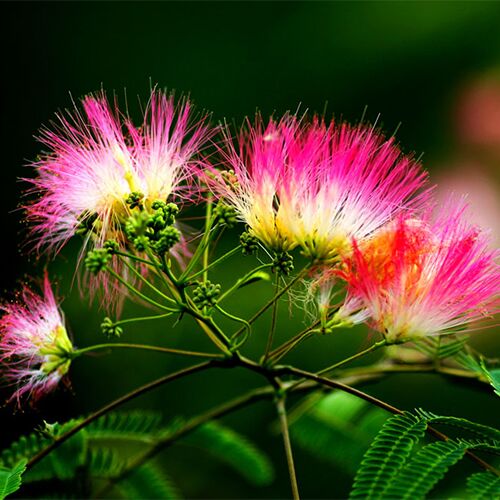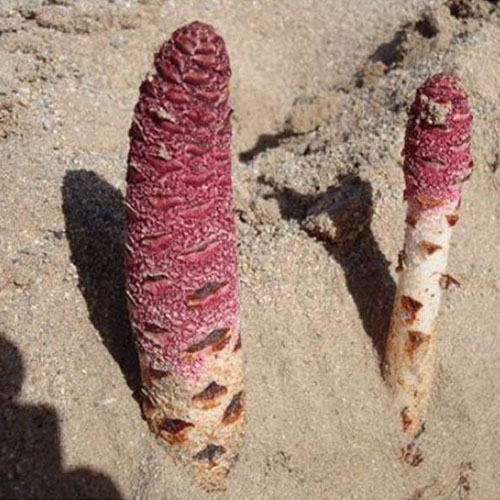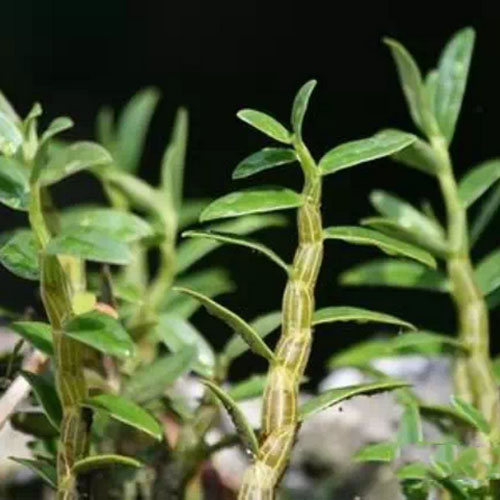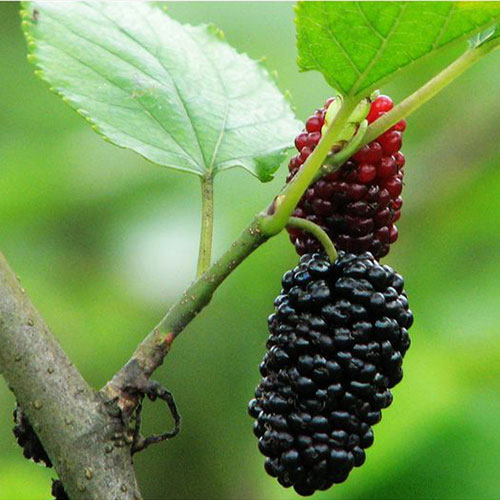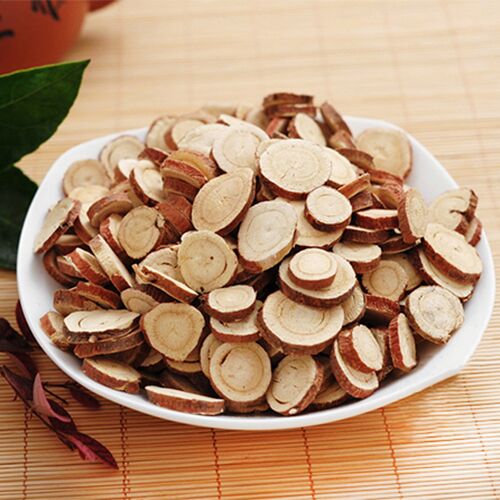- Chinese Name He Huan Hua (合欢花) & He Huan Pi (合欢皮)
- Latin Name Albizia julibrissin
- Other Names Silktree Bark (Flowers), Mimosa Tree Bark (Flowers), Albizia, Cortex Albiziae
- Used Part Bark, Flowers
- Specification Powdered Extract
Albizzia Bark Extract Powder
Description
Albizia — The Happiness Herb
For thousands of years of traditional use, an effective natural approach for the treatment of mild states of depression and anxiety.
The flowers and bark of the mimosa tree (Albizia julibrissin) are among the most valued of Chinese botanicals for relieving anxiety, stress and depression. Commonly found growing throughout temperate zones in the Western United States albizia is native to China, Persia, Korea and Japan. It is traditionally known as “he huan hua” (flowers) and “he huan pi” (bark) and popularly as the “happiness herb,” and “collective happiness bark” by the Chinese. Recently some Chinese herbalists and acupuncturists have even called it ‘herbal Prozac. Its use was first documented in the Shen Nong Ben Cao (Divine Husbandman’s Classic of the Materia Medica) during the 2nd century for its mood supportive and calming properties as well as a tonic. Chinese people traditionally recommend its use for anyone who is suffering from grief as a result of a severe loss.
Both the bark and the flowers of albizia are used as a calming sedative in Oriental traditional medicine. Categorized in the Chinese Materia Medica as a calming spirit herb, the bark is thought to ‘anchor’ the spirit, while the flowers lighten it. The flowers have also been used for the treatment of insomnia, amnesia, sore throat, and contusion in Oriental traditional medicine (Kang, et al) as well as depression, melancholy and anxiety.
Considering the proliferation of antidepressant drugs throughout the Western world with their increasingly recognized adverse effects, it’s wonderful that nature has, in abundance, a safer and better alternative probably growing in close proximity to one’s doorstep. In our opinion, albizia offers a more profound effect in treating depression and anxiety than the two most commonly promoted herbs, St Johnswort (Hypericum perforatum) and Kava (Piper methisticum)[1] and thus should be more widely used.
So, What will happen when compared with normal antidepressant medications?
There are broadly three classes of antidepressant medications, Tricyclic Antidepressants (TCA’s), Monoamine Oxidase inhibitors (MAOI’s) and the most popular, Serotonin Selective uptake inhibitors (SSRI’s).
TCA’s enhance concentrations of the neurotransmitter chemicals norepinephrine (stimulating) and serotonin (the happiness hormone) in the brain. These are known as monoamines and they must be inactivated and reuptaked by the secreting cells. TRI’s block this reuptake, allowing the monoamines to remain active in the body much longer.
MAOI’s not only enhance the same neurotransmitters, norepinephrine and serotonin, but dopamine as well (dopamine is the reward, or satisfaction hormone). This is the most dangerous and least prescribed class of antidepressants, because it may also inhibit the reuptake of tyramine, which can cause dangerously acute hypertension.
SSRI’s (Selective Serotonin Reuptake Inhibitor’s) include the popular drugs Luvox, Paxil, Prozac, Celexa, and Zoloft and work by blocking serotonin reabsorption. Specifically, they prolong the effects of serotonin, with an accompanying sense of prolonged well-being.
All three of these drug catalories list a plethora of possible and, in many cases, likely side effects. These include abnormal weight gain, headache, excessive sweating, upset stomach, diarrhea, sleep disturbances, drowsiness, tremor, weight loss more often than weight gain, and decreased libido. In addition some may predispose one to feelings of apathy, cognitive impairment, sudden irrational bursts of violent rage, and suicide. Expectant mothers generally should avoid their use during the 3rd trimester of pregnancy because of adverse reactions on the infant after birth.
Albizia is thought to enhance all aspects of neurotransmitter secretion and regulation. With thousands of years of traditional use, albizia is a terrific antidepressant and anti-anxiety herb with no known side effects. However, because of its blood-moving properties, it is contraindicated for use during pregnancy.
Biochemical Research Support
The active constituents of albizia are saponins and tannins, while specifically, it contains albitocin, b-sitosterol, amyrin, 3,4,7-trihydroxyflavone, spinasterylglucoside, machaerinic acid, lactone, methyl ester, acaci acid, and lactone. Several compounds of flavonol glycosides, which have demonstrated sedative activity, including quercetrin and isoquercetrin are also a part of its constituents. Finally, research has revealed significant antioxidant activity from the bark.
In one animal study examining the sedative effects of a methanol fresh-flower extract (400g in 3 L), two isolated compounds from albizzia, quercetrin and isoquercetrin (flavonol glycosides), were both found to increase pentobarbital-induced sleeping time in a dose-dependent manner in mice. This indicates a possible herb-drug interaction that patients taking sedatives should be made aware of. This substantiates the sedative claims for albizia, as well.
Interestingly, a methanolic extract of the stem bark of Albizia julibrissin was also found to have significant potential in scavenging destructive free radicals, making albizzia a useful anti-aging antioxidant as well.
Dosage
While the traditional Chinese dose is 9 to 15 grams daily, a positive effect can be achieved with as little as 3 grams daily, Therefore, albizia flowers and bark offer an extremely effective and vastly inexpensive alternative to antidepressant pharmaceuticals.
TCM Tradition
Taste & Property Sweet, Neutral
Organ Meridians Heart, Liver, Stomach (Lung) (Spleen)
TCM Functions
•Calms the Spirit and relieves constraint
Constrained emotions with bad temper, depression, insomnia, irritability, and poor memory
•Invigorates and harmonizes the Blood, stops pain and reconnects sinews and bones
Mildly treats pain and swelling due to trauma including fractures
•Regulates Qi, alleviates pain, dissipates swellings and reduces abscesses
Pain and swelling of abscesses (internally and externally)

